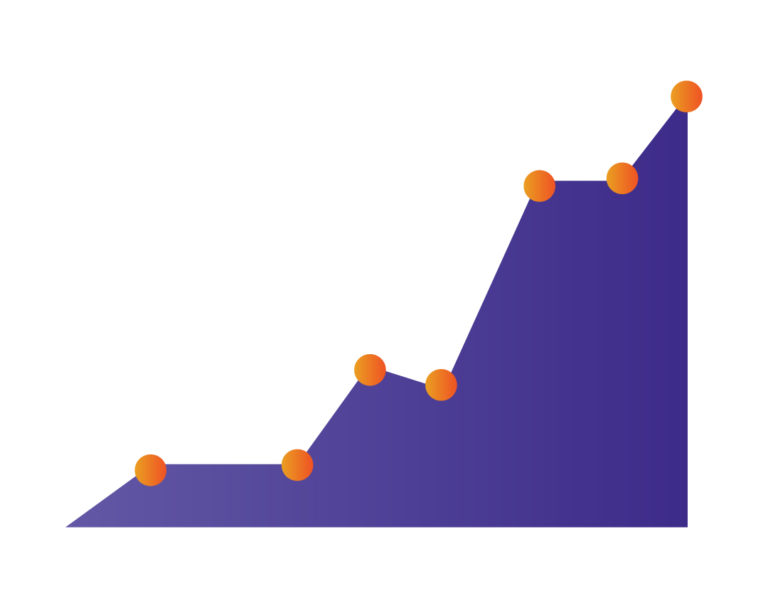There are many intricacies to elevating your workforce. Every detail matters, from the words you choose, to the length of your survey, to how you listen, and what you benchmark. We pride ourselves on helping you know the difference between what’s merely interesting and what matters to moving your workforce forward.
We empower you to Know Now so you Know What Works.


Did you know that changing one word in an item on your survey can cause people to rate the item differently? In fact, that one word can change your scores by as much as 10 percentage points. We know this because we’ve tested thousands of variations of thousands of survey items and we have the insights to share with you. We’ve identified the precise wording to generate the greatest variance in scores. This improves correlation coefficients which is essential to the priority analysis. Translation: better variance produces better results, and every word matters.
At WSA, we can help you select the right items for your survey and consult with you on the appropriate wording to ensure you get the very best results from your program.


Improving employee experience starts with listening. But, is it possible to ask for feedback too often? The answer depends on how you do it. Effective listening provides powerful insights and dramatically moves the employee experience needle. Ineffective listening results in employees who are frustrated, or worse – ambivalent to the process. It all comes down to knowing what to measure and when to measure it. Some factors change slowly over time, so don’t make the mistake of high frequency! Other experiences happen in the moment and should be measured in the moment.
At WSA, we will help you differentiate between the slow moving factors and the real-time moments that matter. The result is a listening program that works – and sticks.


The ultimate goal of an employee experience program is to improve operational and financial performance. But how? What are the factors that are proven to have the most tangible impact on business outcomes? It’s not guesswork. It’s known.
At WSA our consultants have been studying and conducting employee research for 40 years. We have devoted ourselves to uncovering innovative techniques and understanding enduring best practices. Our research has proven that laser focus on employee engagement, manager effectiveness, and equipping employees to reach their full potential are the dials that move the needle on company performance. When it comes to your employee experience program, don’t reinvent the wheel. Let us share the science of employee experience with you.


If we want to know what employees need, why don’t we just ask them? The problem with open-ended feedback is our research shows that you will be flooded with suggestions about compensation, fairness, and work-life balance – none of which move the needle on engagement or business performance.
Why not apply the content from our customer satisfaction program to our employee experience program? Because customer research items are intended to be different than employee research items. Customer research often relies on a four-point Likert scale to remove the neutral option. However, employee research uses a five-point Likert scale specifically because of insights gained from neutral responses.
With Qualtrics you can create any type of item with any scale imaginable. At WSA we’ll help you choose the right one.


It wasn’t that long ago that surveys with over 100+ items were commonplace. It turns out that people have a hard time staying focused on a survey that long. No matter how badly we wanted that feedback, short attention span is a fundamental human truth. So we tested millions of surveys of varying length to determine the right balance of great insights and high participation with valuable feedback. What did we learn? We have about seven minutes to work with when conducting an employee survey.
At WSA, we know there is a fine line between surveys that are too short to be actionable and too long to be useful. We’ll help you strike the right balance.


What is a good response rate and how do we get there? Our global research shows that an effectively deployed survey obtains an 81% response rate. We recommend a bare minimum of 55% and always target north of 80% response rate. The secret to driving strong response rates lies on many factors. It is critical to have an effective communication campaign that creates awareness, address concerns over confidentiality, and builds excitement. It requires strong buy-in from leadership, top to bottom. It’s essential to ensure that all employees are able to easily access and complete the survey. And all of these things require adequate time and planning to ensure success.
At WSA, every project we implement has workstreams dedicated to sharing best practices to ensure strong response rates which result better insights.


We all know that as soon as the survey results are published, a manager’s first instinct is to look at the high scores and pat his or herself on the back, and then look at low scores and want to get them up. What’s wrong with that? Well, if those low scoring items are about topics that nobody really cares about, managers will be spending a lot of time focusing on the wrong things. In fact, its not about scores at all, it’s about understanding how important each topic is to your employees and focusing your time and energy on the most important one. To do this, we leverage Qualtrics to run a priority analysis which help us pinpoint the very best item to focus on for improvement. Our consultants then do a deep-dive analysis to ensure we are helping you distinguish between truly important from merely interesting insights.
We also know that it can be tempting to want to address every priority that surfaces from the survey. Our research shows that just doesn’t work. In fact, organizations who only pick one item for sustained focus consistently grow engagement faster than organizations who focus on several items. At WSA we’ll help you identify and maintain focus on the actions that matter most to your employees.


The first question that every manager asks when the survey results are published is “what are my scores?”, and the second question is “are those scores any good?” To be certain benchmarks can be leveraged to help provide context to the results. Even more importantly benchmarks help us study the items that bubble up to the top as important to employees across all industries and countries around the world. But do benchmarks really help managers get better? Its true, no manager ever became great by comparing him or herself to average. That’s why WSA recommends establishing a high bar for comparison such as the best in class benchmark or internal most engaged units benchmark. Net, having access to global data on engagement and selecting the correct benchmark can be the difference between becoming good or great.
At WSA we have deep expertise at every aspect of employee experience benchmarking. This matters.


Keeping it simple sounds, well, simple. But the reality is that far too often managers are inundated with too much data and too little support. Managers are exceptionally busy and may not inherently know how to create an environment of high engagement and performance. Sufficed to say that sharing a mound of survey results with a directive to take action is often doomed to fail.
At WSA we keep it crayon simple for managers. We give them laser focus – and provide loads of support. We offer a massive library of resources such as sample action steps, feedback meeting agendas, focused listening questions, video-based tutorials, and more. We know that managers make better editors than authors when it comes to planning for behavior change. And we know that the more simple we make it, the more successful the outcome.


Qualtrics enables you to collect feedback from employees in countless ways. The technology makes it fast and simple to deploy. It can be tempting to want to take your program from the dark ages to the cutting edge on day one. So why crawl, walk, run when you can go directly to sprinting? Because in order to move the needle on performance your strategy, content, and technology need to be in perfect harmony. Often, the feedback you collect from one survey becomes the playbook for what you need to collect on the next, and whom to collect it from. Carefully deployed, the outcome is a well-coordinated and effective listening program. However, if deployed too quickly the program is, and only, merely continuous listening.
At WSA, our philosophy is that you should only do the things that you can do right and well. We’ll help ensure that is exactly what you do.


Of course they do! But merely collecting feedback, taking action, and doing linkage analysis is simply not enough. In fact, driving tangible business outcomes in a meaningful way is extremely difficult. But we know how.
It starts by focusing on your most critical job families and understanding the key business metrics they most directly impact. We then must determine the specific behavioral outcomes that are required to make a significant impact on those metrics. Finally, we need to determine the precise psychological, operational, and managerial levers to pull that will move employee behaviors in the right direction.
At WSA our mission is to help you move the needle on the metrics that matter most to your company. It’s our measure of success.
